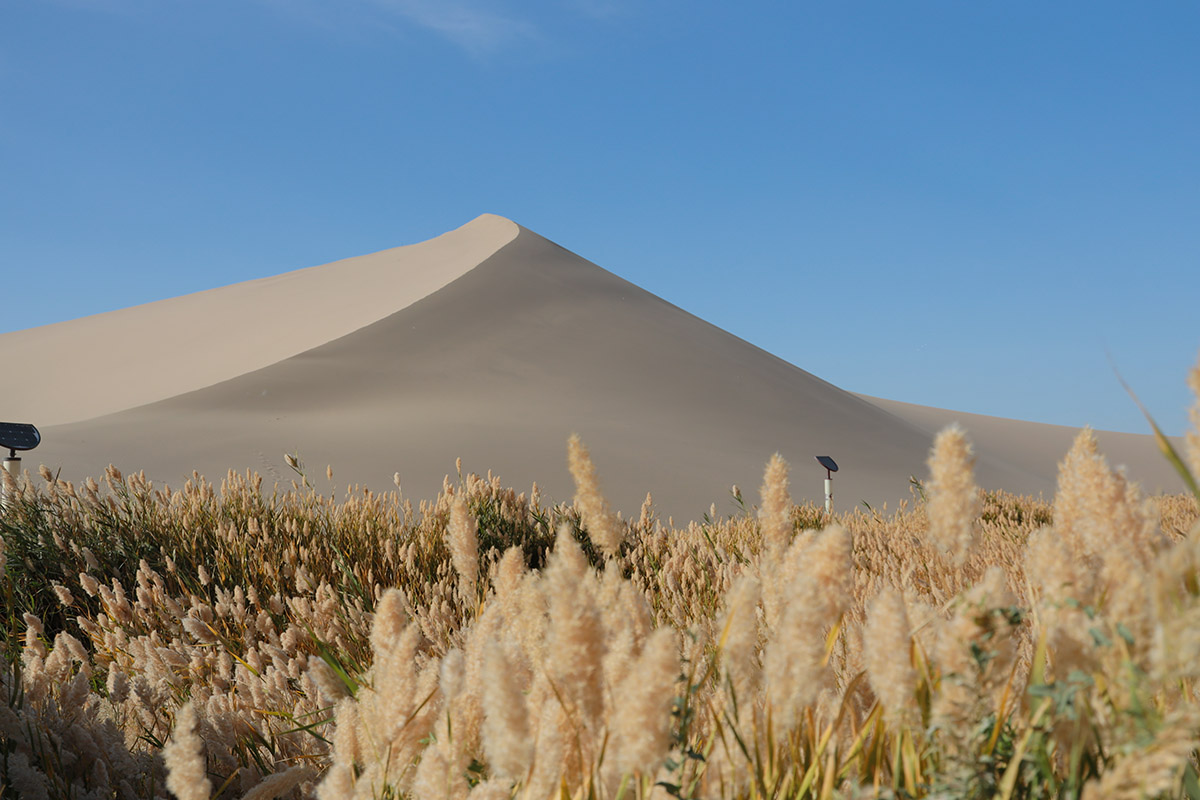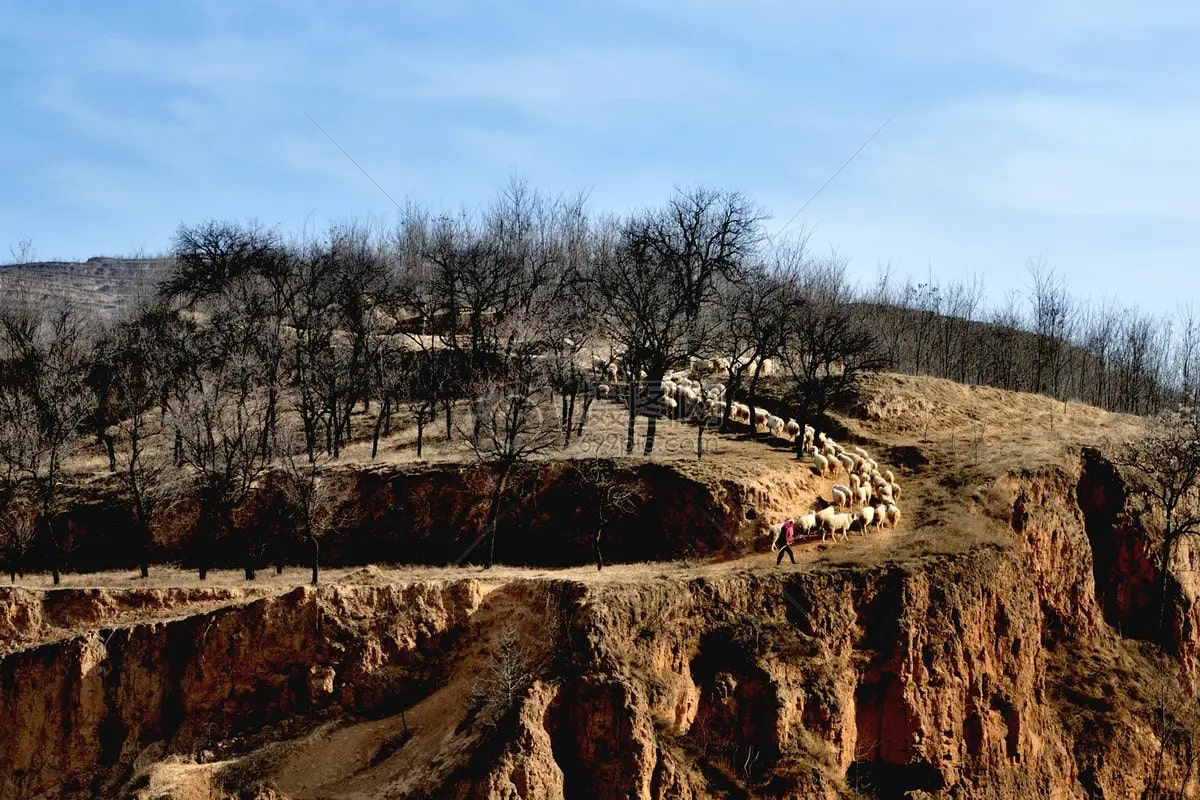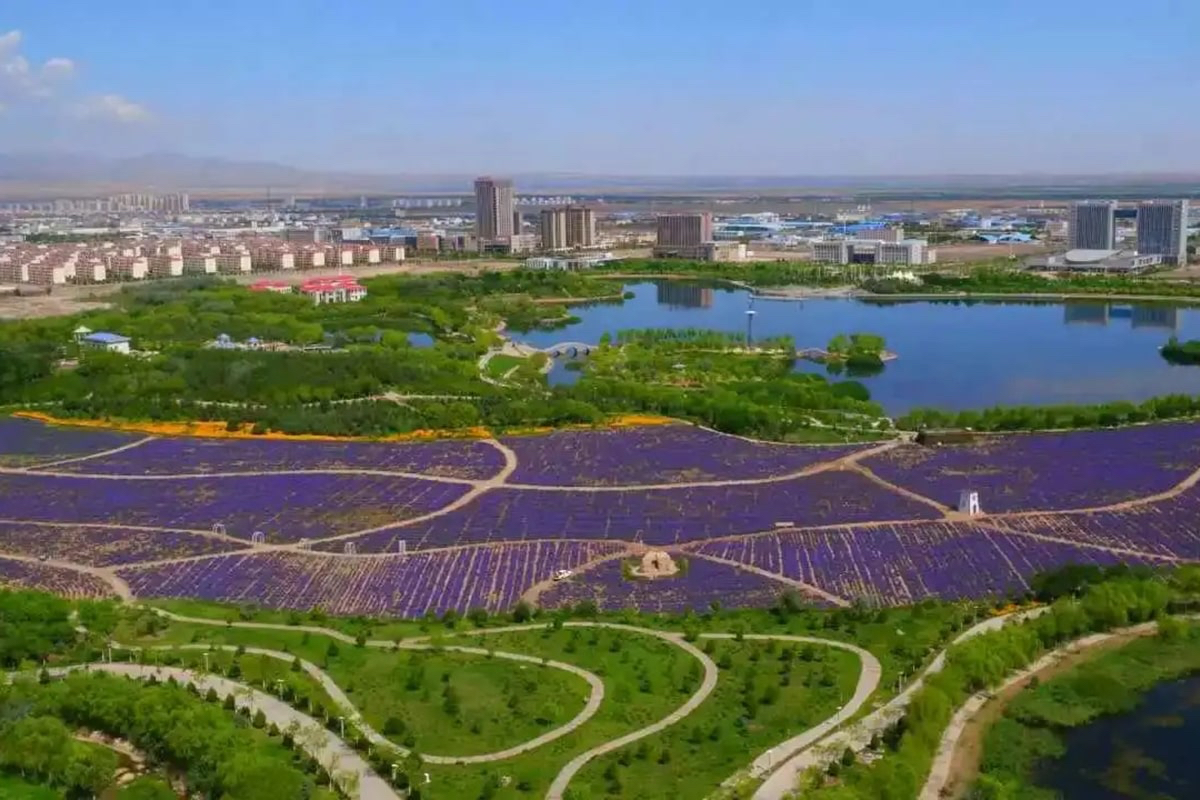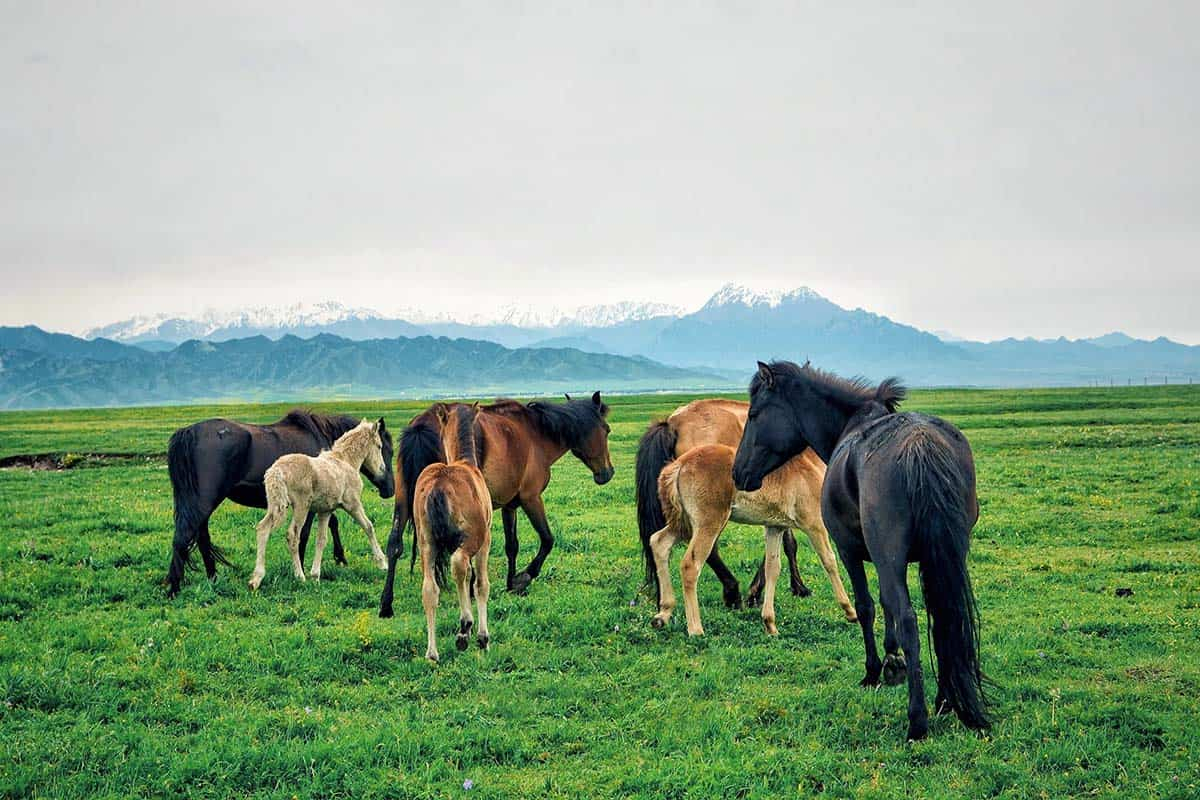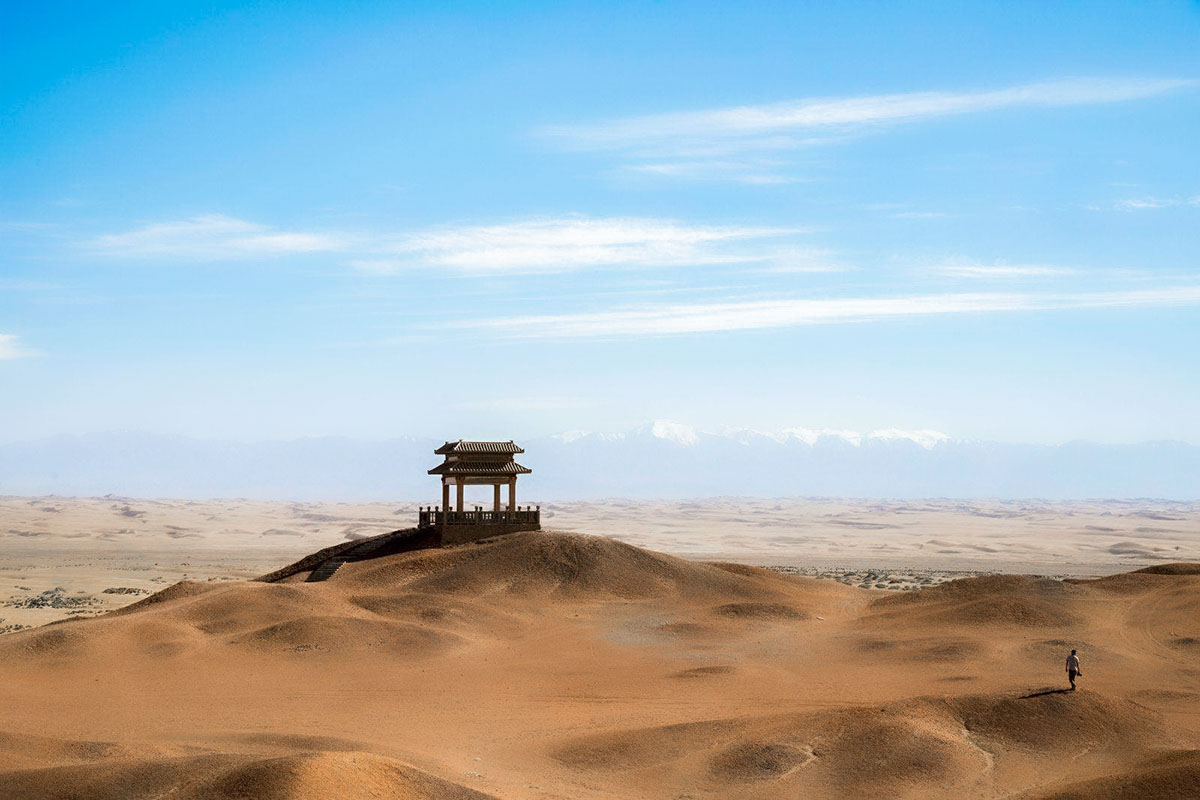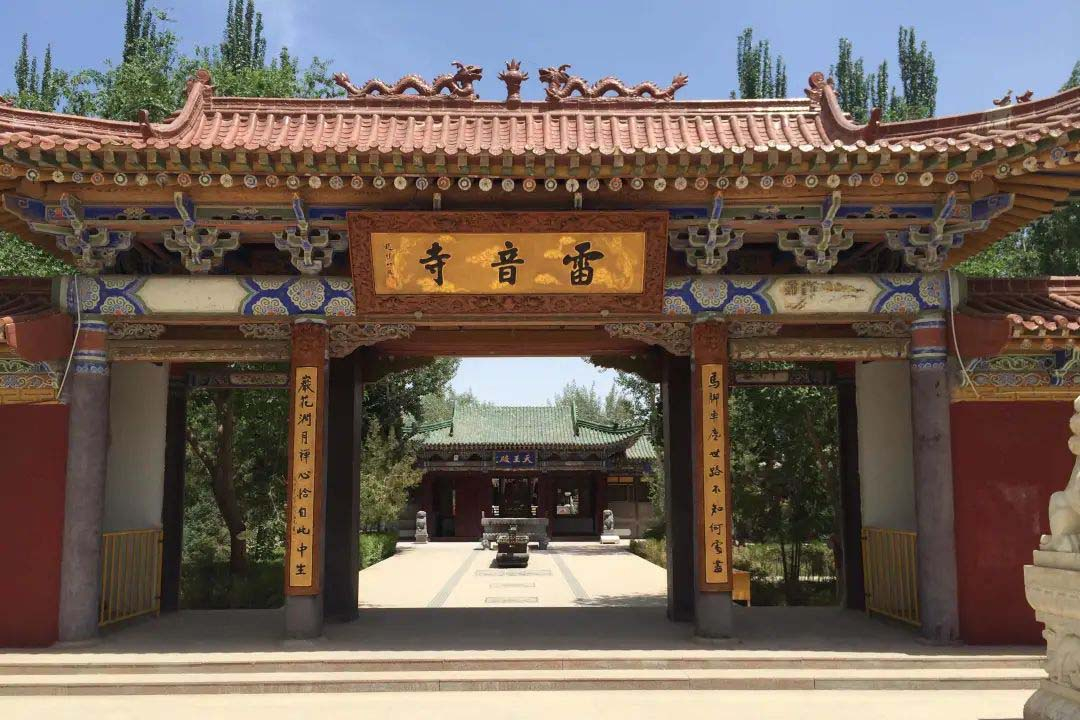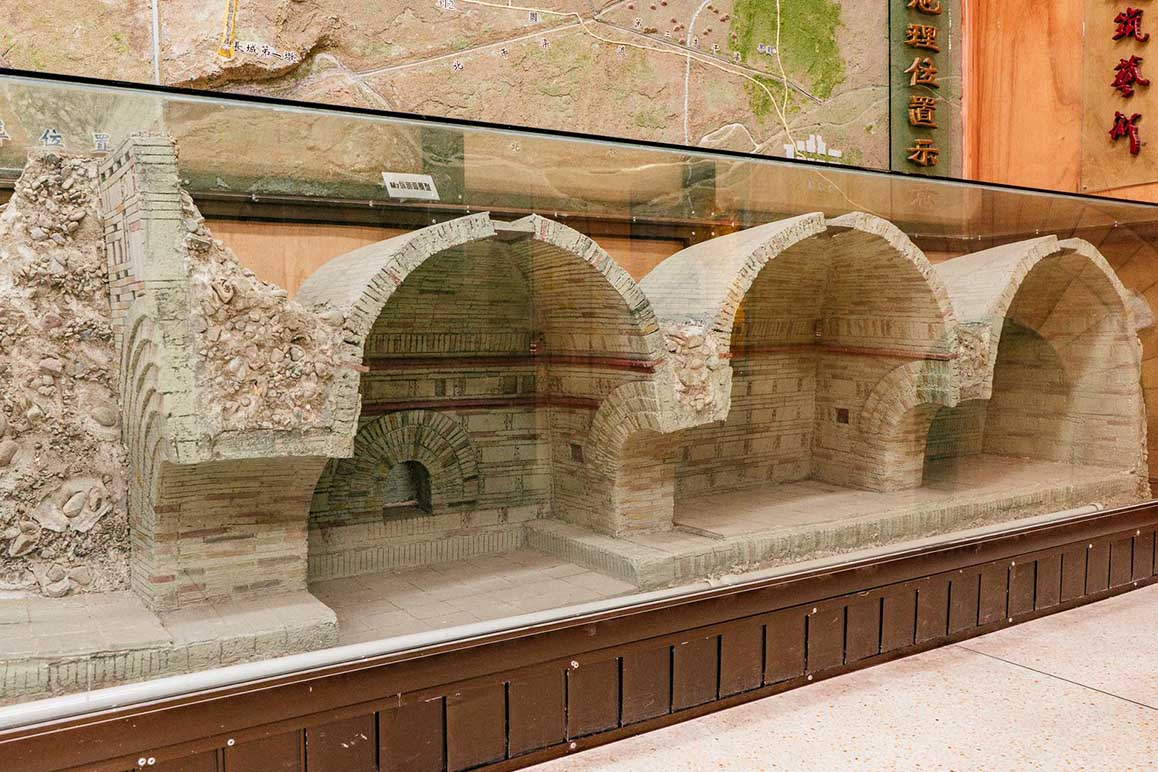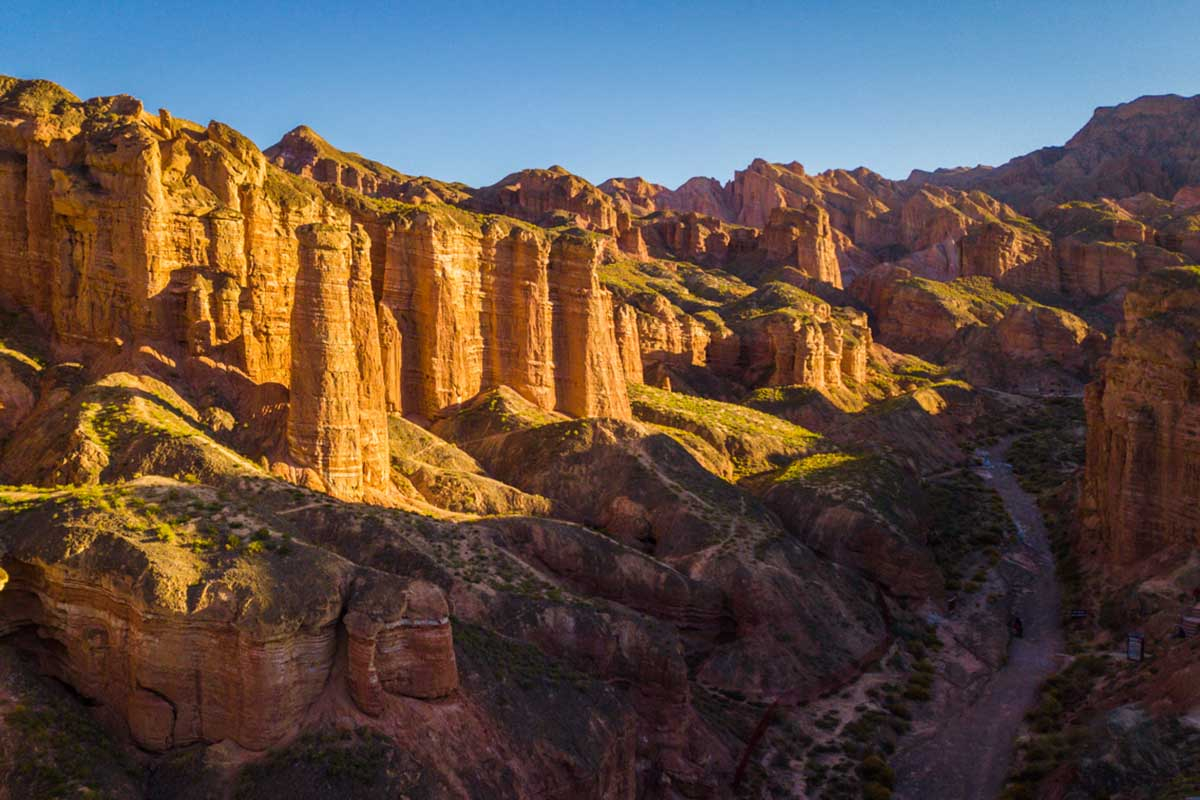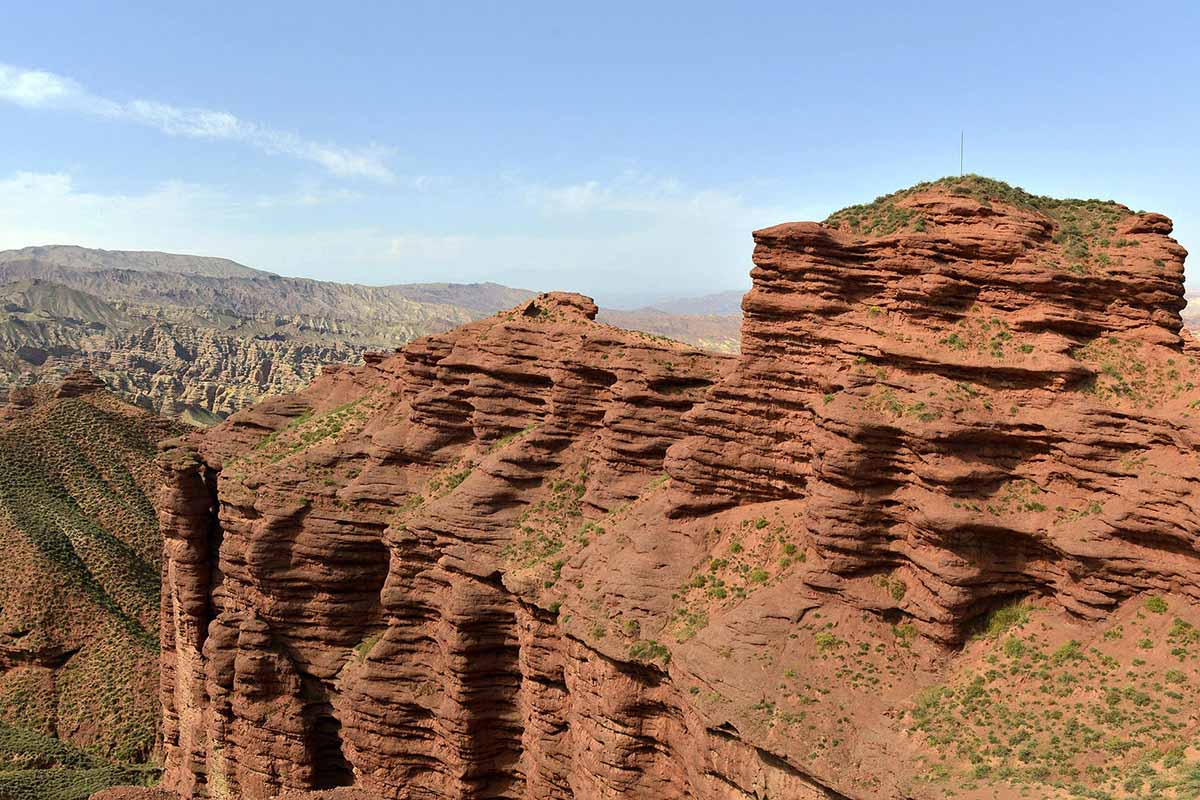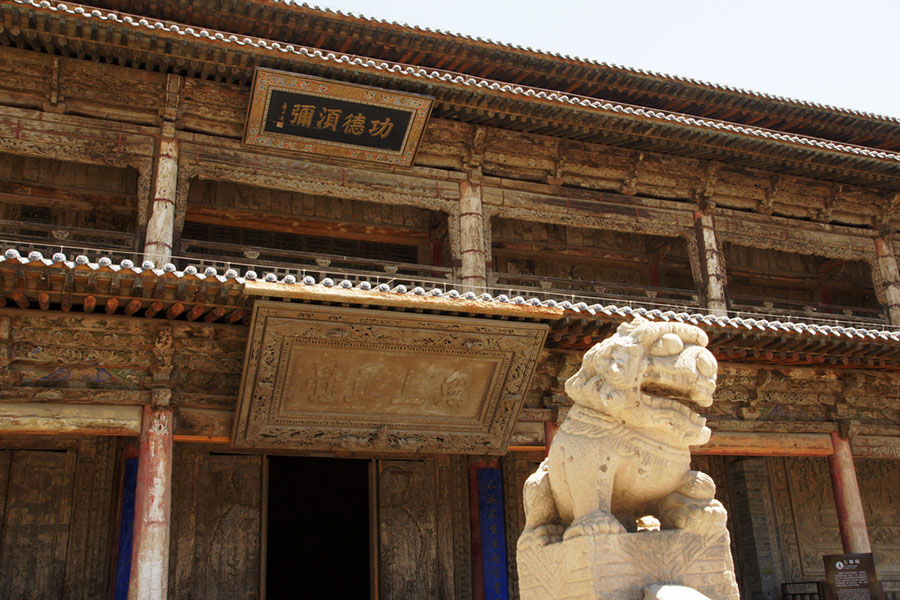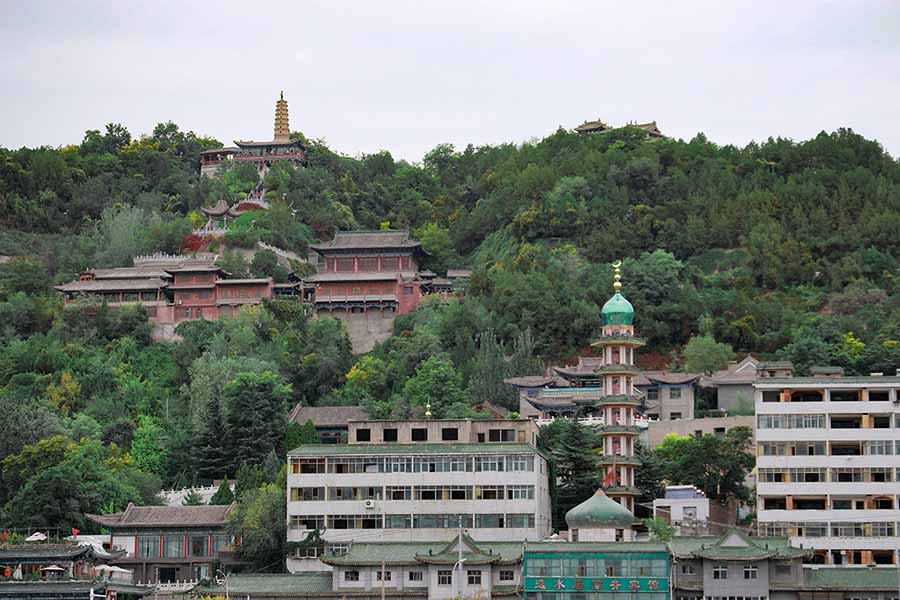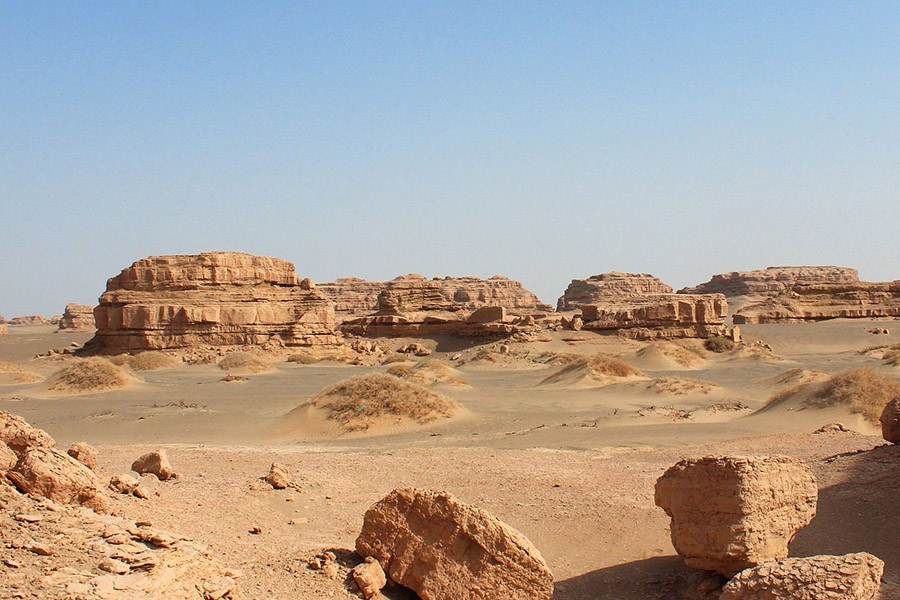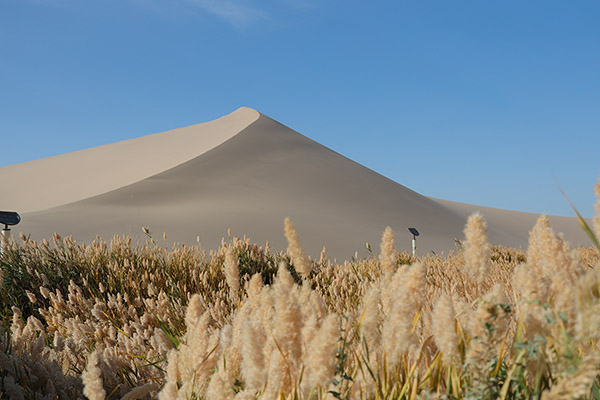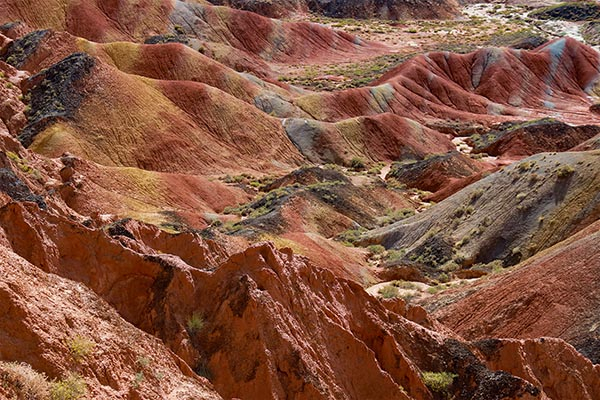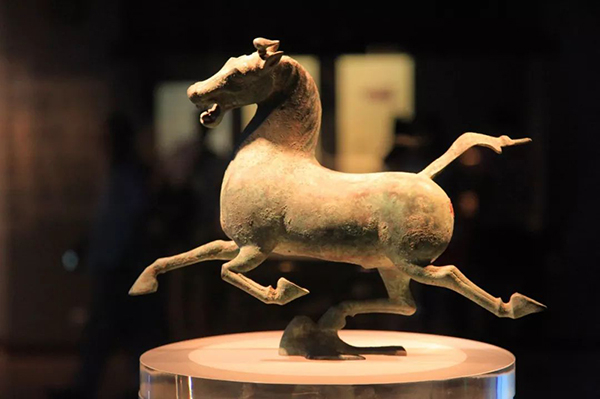Echoing-Sand Mountain
Chinese name: 鸣沙山(Ming Sha Shan)
Location: Yueyaquan town, Dunhuang, Gansu Province.
Ticket: Entrance ticket CNY120.00
Estimated tour time: 3-4 hours
Recommended time to visit: May to Oct
Nearby attractions: Dunhuang Museum, Mogao Grottoes, Yadan National Geology Park, Yumen Pass, Yangguan Pass, etc.
There is a spectacular area of natural scenery in Dunhuang: the Echoing-Sand (Mingsha) Mountains. The mountains are pale golden sand dunes dozens of meters high, covering an area roughly 40 km (25 mi) square, when the wind blows, give out a singing or drumming sound. They are part of the Kumtag Desert.
Located on the Silk Road, the Echoing-Sand Mountain is known as one of the Eight Great Landscapes of Dunhuang and one of the Four Great Singing Sands of China. Completely piled by sands, the mountain stretches for 40 km in length and 20 km in width respectively, with the highest point reaching 250 meters. When there is wild wind, the sands will be blown up and make loud sound, while the sound sounds like being produced by some ancient musical instrument when blew by breeze, hence the name.
The mystery of how these Mingsha sand dunes were created is still unsolved. No one can still give a justified reason of the definite phenomenon of these singing sand dunes. Some says that perhaps there are antique palaces under the dunes, whereas some believe that sand has a good amount of quartz which makes this sound. But Chinese scientists say that the main reason behind the echo effect of the sand is the resonance phenomenon.
Though it is sweaty work, the dramatic view from the top makes the effort worthwhile.The climb to the top of the dune is the most marvelous experience. It is a popular activity to ride sleds down the sand slopes, much like snow-sledding in winter. The tremendous sound is produced when sliding down along the sands. It is really a wonderfully experience!
● Crescent Lake (Yueyaquan)
Just like its name indicates, the Crescent Lake is in a natural shape of half-moon and had been commonly considered as one of the Eight Great Landscapes of Dunhuang together with the Echoing-Sand Mountain early in Western Han Dynasty (206BC-24AD).
Crescent Lake extends for nearly 100 meters from south to north and about 25 meters from east to west and has a deepest point of approximately 5 meters. Compared to its annual evaporation capacity of 2400 mm, Crescent Lake has an annual amount of precipitation of only 50 mm. However, the particular geographic landform around it prevents it from being buried in the desert; on the other hand, the underflows beneath it also ensure continuous source for it. Therefore, the stream has never dried up or buried by drifting sands in spite of locating among sand dunes, accurately at the foot of Echoing-Sand Mountain.
Vistors can explore the sand dunes by camel, electric car, quad bike or by foot. Riding a camel on the desert of the Echoing-sand Mountains is a great experience. You can enjoy the beautiful wavy shapes of the smooth yellow dunes against the deep blue sky, and imagine you are traveling the ancient Silk Road. Step off the camel and listen for the singing of the sand.
- HOTEST
- RECOMMEND
